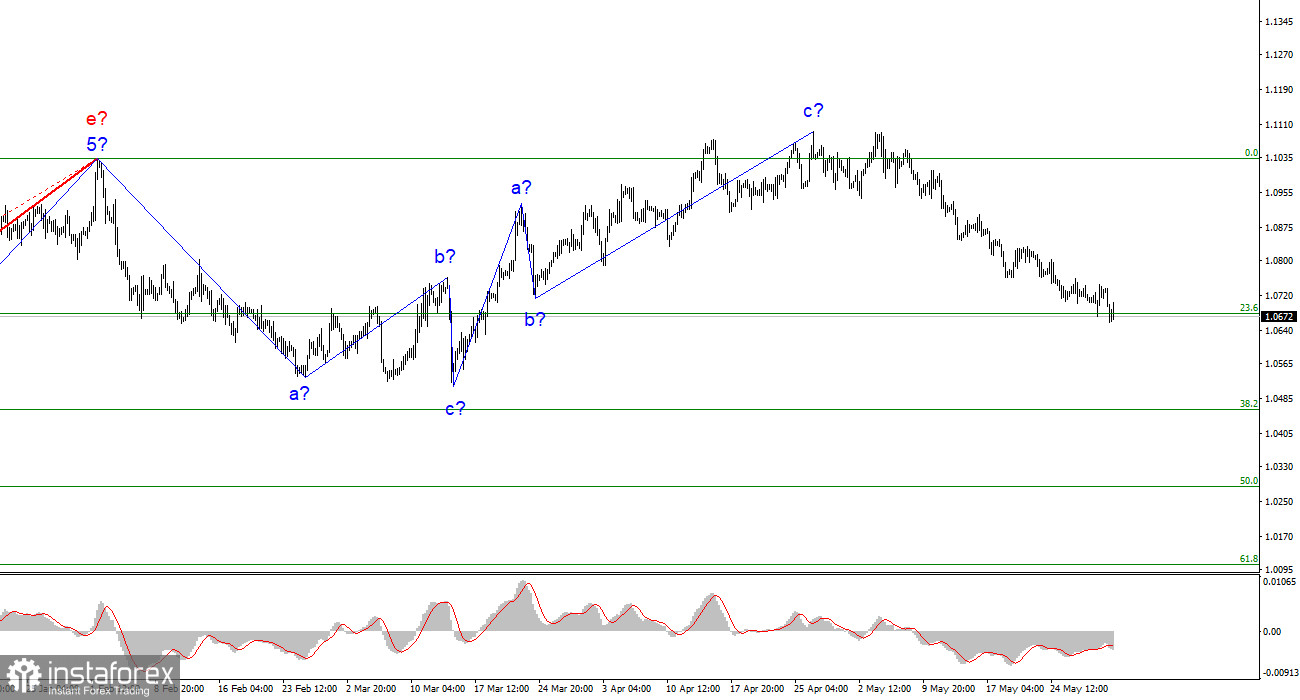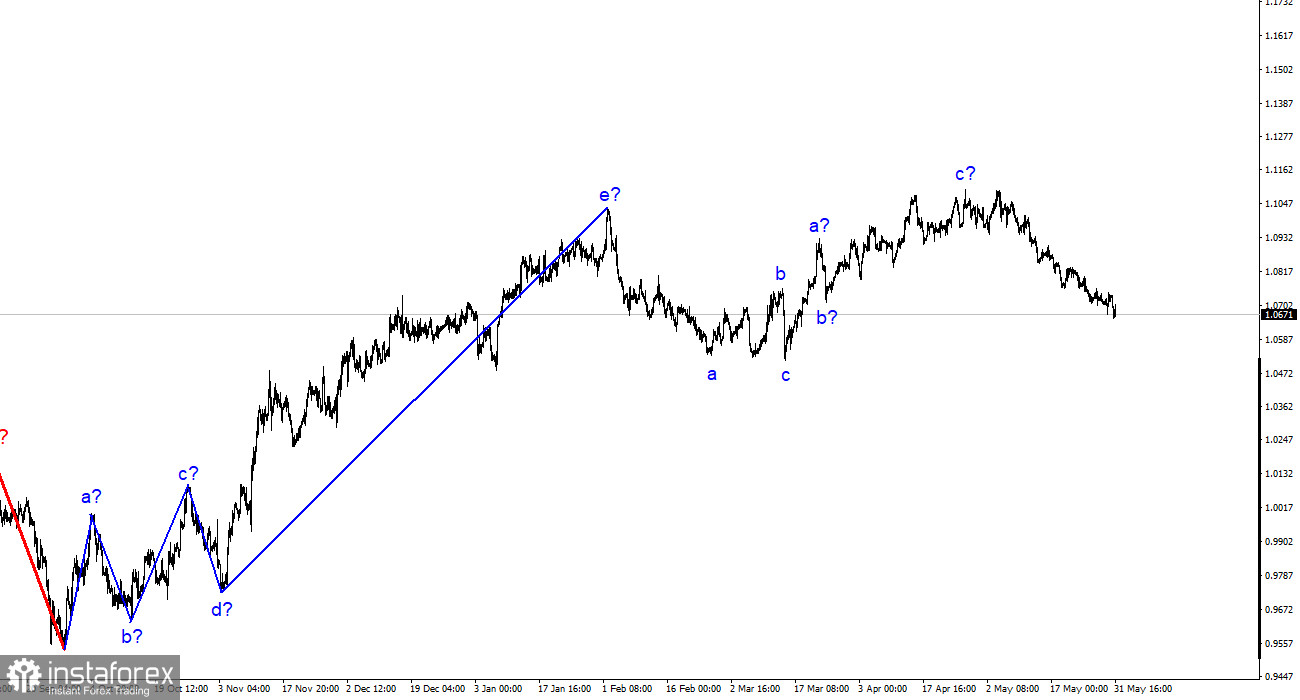
The wave labeling on the 4-hour chart for the euro/dollar pair continues to be non-standard and has not changed in recent weeks. The quotes continue to move away from the previously reached highs, so the three-wave upward structure can be considered complete. The entire ascending trend segment could form a five-wave corrective pattern, but at the moment, I expect the formation of a downward trend segment, which is likely also to be a three-wave structure. I have regularly mentioned that I expect the pair to be near the 5th figure, where the upward three-wave structure began.
The high point of the last trend segment was only a few tens of points higher than the highest point of the previous upward segment. Since December of last year, the pair's movement can be considered horizontal, and this character of movement will be maintained. If this assumption is correct, the formation of an upward wave "b" will start soon, and the overall decline of the pair will continue after its completion.
The ECB speaks of the need for tightening, but inflation is falling.
The euro/dollar exchange rate decreased by 60 basis points on Wednesday, a significant decline according to current standards. The presumed wave "a" continues its formation, but a successful attempt to break through the level of 1.0679, which corresponds to 23.6% Fibonacci, has not occurred yet. Therefore, the formation of a corrective wave "b" may still start at this level. Today's news background was very interesting for the European currency. Germany released data on unemployment and inflation in the morning. The unemployment rate remained at 5.6% in May, while inflation decreased from 7.2% in May to 6.1% y/y. Such a value of the indicator can still be considered high, and the ECB needs to continue tightening monetary policy. Still, a 1.1% inflation decline is a favorable and encouraging trend.
Christine Lagarde's speech was also expected today, but there has yet to be any information. Demand for the euro currency continues to decline steadily as falling inflation means that ECB rates may be raised less than expected or currently anticipated in the future. However, we still have two more rate hikes to see, but they are unlikely to support the European currency as they have been known for a long time, and the market has had enough time to factor them into the current exchange rate. At the moment, I expect a slight further decline in the Euro currency, but wave "b" should also start. The USD does not deserve a new downward trend segment, as the FOMC is nearing the end of the tightening process. Yesterday, Loretta Mester suggested that the rate could be raised again in June, but it is only one increase and cannot support the dollar for a long time. There is no certainty that other committee members will support Mester's view.
General conclusions.
Based on the analysis conducted, an upward trend segment is formed. Therefore, I recommend selling, as the pair has significant room for decline. I still consider targets in the range of 1.0500–1.0600 quite realistic. With these targets, I advise selling the pair. A corrective wave may start at the level of 1.0678, so I recommend new sales in the event of a successful breakthrough at this level.
On a higher wave scale, the wave labeling of the ascending trend segment has taken on an extended form but is likely completed. We have seen five upward waves, which most likely form the structure of a-b-c-d-e. Forming a downward trend segment may still need to be completed, and it can take any form and length.
 English
English 
 Русский
Русский Bahasa Indonesia
Bahasa Indonesia Bahasa Malay
Bahasa Malay ไทย
ไทย Español
Español Deutsch
Deutsch Български
Български Français
Français Tiếng Việt
Tiếng Việt 中文
中文 বাংলা
বাংলা हिन्दी
हिन्दी Čeština
Čeština Українська
Українська Română
Română


